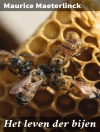From the perspective of local scientists, this book provides insight into bees and bee
management of Asia, with a special focus on honey bees.
Asia is home to at least nine honey bee species, including the introduced European honey
bee, Apis mellifera. Although A. mellifera and the native Asian honey bee, Apis cerana,
are the most commonly employed species for commercial beekeeping, the remaining
non-managed native honey bee species have important ecological and economic roles
on the continent. Species distributions of most honey bee species overlap in Southeast
Asia, thus promoting the potential for interspecies transmission of pests and parasites,
as well as their spread to other parts of the world by human translocation.
Losses of managed A. mellifera colonies is of great concern around the world, including
in Asia. Such global colony losses are believed to be caused, in part, by pests and
parasites originating from Asia such as the mite Varroa destructor, the microsporidian
Nosema ceranae, and several bee viruses.
Taking advantage of the experience of leading regional bee researchers, this book provides
insight into the current situation of bees and bee management in Asia. Recent
introductions of honey bee parasites of Asian origin to other parts of the world ensures
that the contents of this book are broadly relevant to bee scientists, researchers, government
offi cials, and the general public around the world.
Inhaltsverzeichnis
2.1 Introduction: The overview of honey bee diversity in Asia and bee health.- 2.2 Beekeeping in Turkey The Last Point of Asia towards Europe.- 2.3 Beekeeping in Parts of The Levant Region.- 2.4 Beekeeping History and Current Situation in Israel.- 2.5 Beekeeping and Honey Hunting in Nepal: Current Status and Future Perspectives.- 2.6 Beekeeping in India.- 2.7 Beekeeping in mainland, China.- 2.8 Beekeeping in Taiwan, China.- 2.9 Beekeeping in Russia.- 2.10 Beekeeping in Korea; Past, Current and Future Challenge.- 2.11 Beekeeping in Mongolia.- 2.12 Beekeeping in Japan.- 2.13 Development of beekeeping in Laos: various strategic choices.- 2.14 Beekeeping in Vietnam.- 2.15 Beekeeping in Thailand.- 2.16 Social bees and current status of beekeeping in Indonesia.- 2.17 Bee diversity in the Philippines and current status of beekeeping.- 2.18 Future perspectives.
Über den Autor
Panuwan Chantawannakul (Faculty of Science, Chiang Mai University, Thailand)
Geoffrey Williams (Department of Entomology & Plant Pathology, Auburn University, USA)
Peter Neumann (Inst. of Bee Health, University of Bern, Switzerland)












